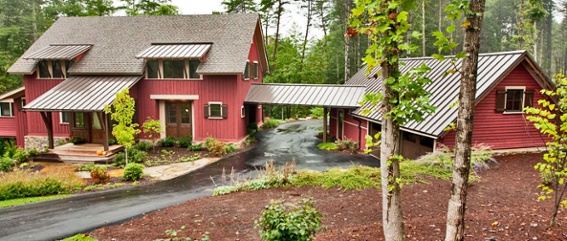
7 Strategies to Keep In Mind When Building a Green Home
5/3/2017
Many homeowners are looking for ways to live more sustainably. Green homes provide a solution to many of environmental challenges by saving energy, reducing water consumption, and protecting human health. When properly constructed they can save money, enhance comfort, and promote health by avoiding exposure to toxins and contaminants.
Here are some tips for building a green home:
Select an Architect & Builder with Green Building Experience
Many builders and architects have experience building green homes, including homes built to the LEED or Passive House standard. Selecting experienced building professionals can help streamline the process and ensure their familiarity with green home solutions to make everything easier for you.
Think Green During the Planning Process
It is important to incorporate green features early in the planning process. From generous amounts of insulation to a southern orientation that takes advantage of heat from the sun, many green features must be planned from the beginning.
Choose a Building Site With Southern Exposure
Did you know that home heating and cooling is responsible for 50% of home energy use?
Unless you live in a very hot climate, it is ideal to find a building site with southern sun exposure between 9 am and 3 pm. This allows the sun to heat your home during the colder months, saving energy and keeping you comfortable. It will also increase the opportunity for you to add a solar energy solution, helping you take advantage of renewable energy to further reduce your energy bills and your impact on the environment.
Use Generous Amounts of Insulation
Insulation helps keep the cold out in the winter and the heat out in the summer. It is much easier to insulate a home properly when it is built than to try and add it in later. Many green homes go beyond local code requirements and have plenty of insulation to save energy and promote home comfort.
Air Seal for Energy Efficiency
Homes are being more tightly constructed than ever before. Sealing gaps and cracks in the building envelope stops air from leaking in and out.
Although this is great from an energy-efficiency standpoint, very tightly constructed homes can create indoor air quality issues when there isn’t adequate ventilation. Excess moisture can cause mold growth, and unhealthy levels of airborne toxins can accumulate, triggering allergies and respiratory issues.
Bring in Fresh Air with a Zehnder HRV or ERV
Zehnder heat recovery ventilators (HRVs) and energy recovery ventilators (ERVs) promote indoor air quality without compromising energy efficiency. These ventilators bring a constant stream of fresh, filtered air in and keep pollutant and contaminant levels to an absolute minimum, helping you and your family stay healthier.
Our systems are the most energy efficient HRVs and ERVs on the market, allowing for both high indoor air quality and low energy bills by transferring the heat from the exhaust air to the intake air.
Select Safe Finishes and Building Materials
Many finishes and flooring products on the market contain concerning levels of volatile organic compounds (VOCs). When selecting paints, sealants, adhesives, cabinetry, and flooring, it is recommended to select products with low toxicity. GREENGUARD-certified products have low chemical emissions, promoting healthy home air.
Keeping these tips in mind while planning your green home build will help ensure energy efficiency, savings, comfort, and health with beneficial indoor air quality.
